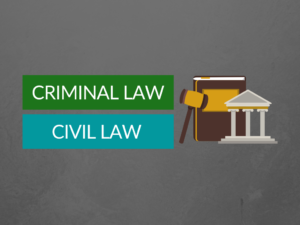Difference Between Restraining Order and Protective Order
When it comes to legal protection, restraining orders and protective orders are often used interchangeably. However, there are significant differences between the two. Understanding these differences is crucial in order to ensure the appropriate legal action is taken in a specific situation.
What is a Restraining Order?
A restraining order is a legal document issued by a court that aims to prevent one person from contacting or approaching another person. It is a form of protective measure to ensure the safety and well-being of the individual seeking the order. Restraining orders can include various provisions such as staying away from a specific location or person, no contact orders, and prohibiting harassment or stalking.
Examples of Restraining Orders:
- An individual filing a restraining order against an abusive ex-partner.
- A celebrity seeking a restraining order against a stalker.
- A tenant requesting a restraining order against a harassing neighbor.
Uses of Restraining Orders:
Restraining orders are typically utilized in cases of domestic violence, harassment, stalking, or situations where one person feels threatened or unsafe in the presence of another individual.
What is a Protective Order?
A protective order, also known as a protection order, is a legal directive issued by a court to safeguard an individual or group from harm or further harm. It is a broader term that encompasses various types of orders designed to protect victims of abuse, violence, or harassment. Protective orders can limit the actions of the offender by imposing specific conditions or restrictions.
Examples of Protective Orders:
- A court issuing an order to protect a victim of domestic violence from their abusive spouse.
- An organization obtaining a protective order against an individual who poses a security threat.
- A parent securing a protective order to protect their child from an abusive caregiver.
Uses of Protective Orders:
Protective orders are commonly utilized in cases involving domestic violence, elder abuse, child abuse, sexual assault, harassment, or situations where there is a clear threat to someone’s safety or well-being.
Differences Table:
| Difference Area | Restraining Order | Protective Order |
|---|---|---|
| Scope | Generally limited to specific individuals or situations. | Broader and covers a wider range of potential threats. |
| Violations | Violating a restraining order is a civil offense. | Violating a protective order can result in criminal charges. |
| Duration | Usually temporary and valid for a specific period. | Can be temporary or permanent, depending on the circumstances. |
| Issuing Authority | Typically issued by a civil court. | Can be issued by both civil and criminal courts. |
| Enforcement | Enforcement relies on the aggrieved party reporting violations to the court. | Law enforcement agencies actively enforce protective orders. |
| Applicability | Primarily used in cases of harassment, stalking, or domestic disputes. | Applied in various situations, including domestic violence, sexual assault, and child abuse. |
| Burden of Proof | Generally requires a preponderance of evidence to be granted. | Usually requires a higher burden of proof, such as clear and convincing evidence. |
| Notification | Restraining orders may not require the offender to be notified. | Protective orders usually require the offender to be notified. |
| Availability | Available to individuals in non-criminal situations. | More commonly sought in criminal cases. |
| Consequences | Violating a restraining order may result in contempt of court charges. | Violating a protective order can lead to arrest and criminal charges. |
Conclusion:
In summary, while restraining orders and protective orders both serve to protect individuals from harm, restraining orders are typically narrower in scope and are used primarily in civil cases, while protective orders have a broader application and are commonly utilized in both civil and criminal cases. Understanding the differences between these two legal measures is crucial in order to provide the appropriate protection in each specific situation.
Knowledge Check:
Test your knowledge on the differences between restraining orders and protective orders:
- True or False: Violating a protective order can lead to criminal charges.
- What is the key difference between restraining orders and protective orders in terms of scope?
- Who can issue a restraining order?
- What types of situations are protective orders commonly used in?
- Which type of order requires a higher burden of proof?
- True or False: Restraining orders are typically permanent.
- Which type of order requires law enforcement agencies to actively enforce it?
- True or False: Violating a restraining order is a criminal offense.
- What is the primary purpose of a restraining order?
- What consequences can an individual face for violating a protective order?
Answers:
- True
- Restraining orders are generally limited to specific individuals or situations, whereas protective orders have a broader scope.
- A restraining order is typically issued by a civil court.
- Protective orders are commonly used in cases involving domestic violence, elder abuse, child abuse, sexual assault, harassment, or situations where there is a clear threat to someone’s safety or well-being.
- Protective orders usually require a higher burden of proof, such as clear and convincing evidence.
- False; restraining orders are usually temporary and valid for a specific period.
- Law enforcement agencies actively enforce protective orders.
- False; violating a restraining order is a civil offense.
- The primary purpose of a restraining order is to prevent one person from contacting or approaching another person, ensuring the safety and well-being of the individual seeking the order.
- An individual can face arrest and criminal charges for violating a protective order.


